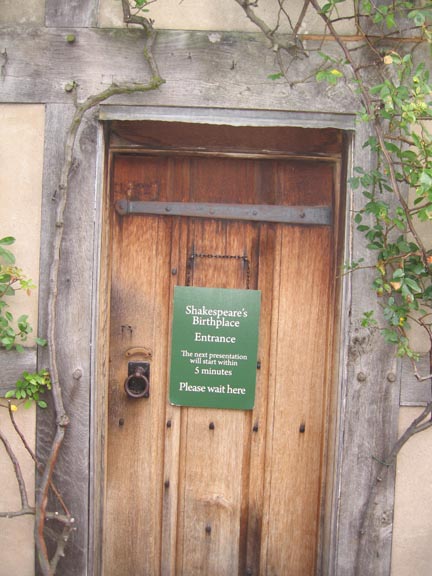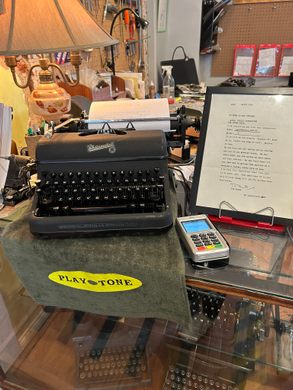
Swatch List
Over at Print magazine, Steven Heller looks at a new book by Anne Varichon called Color Charts: A History, an exploration of “the implications of color and its cultural impact.”
Color Charts offers a full spectrum of inspiration as it reveals through text and image the various methods used to create an incredible number of colors and hues. It contains an awe-inspiring array of original writing and vintage texts on color creation and promotion through such artifacts as swatches, fabrics, charts and dyes. Sample books and notebooks are qualitatively reproduced, and the cover (designed by Katie Osborne) is a gem as object and document.

He also conducted a lengthy interview with Varichon.
Can you discuss the upheaval with synthetic colors?
To summarize in a few words: The discovery of synthetic dyes and pigments starting in the mid-19th century, combined with the growth of industrial processes, made affordable color available to everyone. Finally, color was not restricted to the elite. This is what I call the color revolution. The flipside of this is that the arrival of synthetic color wiped out the immense knowledge of colors from nature, first in Europe and then around the world, ultimately leading to a profound transformation of humanity’s relationship to color.
For the Bards
The New York Times says:
Every year, millions flock to Stratford-upon-Avon, England, to visit the house known as Shakespeare’s Birthplace.
And we have!
But was he really born there? A whole industry depends on it.

The town of Stratford-upon-Avon is about two hours by train northwest of London in the Midlands.
Today, it is one of Britain’s most popular tourist destinations, drawing up to three million visitors a year. The Birthplace is its main attraction, followed by the cottage reputed to be the place where Anne Hathaway, Shakespeare’s wife, grew up.
The thing is, no one really knows where Shakespeare was born.
On Henley Street, I arrived at the Birthplace, a half-timbered house yellowed with age. Today, it looks like a single detached building, but it was originally a row of tenements. John Shakespeare bought one tenement on the street in 1556, though he also bought property on nearby Greenhill Street, which could just as easily have been the site of his son’s birth. He bought the property thought to be the Birthplace in 1575, 11 years after his son was born.

Those who believe in the Birthplace point to a record from 1552 showing that a John Shakespeare was fined for keeping a dung heap somewhere on Henley Street. It doesn’t specify the location, but that dung heap has fueled a theory that he must have been living there at the time of his son’s birth, perhaps as a renter.
Yeah, it’s kind of tourist trappy, but if you go into it knowing that record-keeping was fairly non-existent in the 16th century, it’s easy to get swept up into the spirit of things. However, some people are unamused.
“Stratford permits — indeed encourages — one of the biggest frauds in England to rage unchecked,” the journalist Bernard Levin railed in The Daily Mail in 1965. “I mean those two monumental frauds, ‘Shakespeare’’s Birthplace and Anne Hathaway’s Cottage.”
But then there is a whole industry built around debunking the fact that Shakespeare even existed, let alone wrote the plays attributed to him, a rabbit hole we have no desire to go down.

Inside the Birthplace, I went from room to room with the other visitors. Guides regaled us with tales of Shakespeare’s childhood — how he played and ate and dreamed in these rooms. Of course, his childhood is actually a yawning blank: From his baptism in 1564 to his marriage in 1582, there are no records of him. In one room, a table displayed books, quills and ink, indicating a family of learning — but his parents signed documents with a mark, like many illiterate people in Tudor England.
It’s interesting that very little is known of his activities in London when he was at the peak of his popularity as an actor and writer, so the idea that anyone would have any idea of what his childhood was like does strain credulity just a tad.
Where was “the Immortal Shakspeare” really born? Stories are usually more seductive than the truth.
And we’re perfectly OK with that.
Key Stone State
If you’re ever in Philadelphia, be sure to drop in and visit Philly Typewriter, the largest typewriter company in the world (not that there is a massive amount of competition at this point). Via Atlas Obscura:
While humble in size, this shop is home to over 1,300 machines spanning 130 years of history. Visitors can drop in any time the shop is open to tour the workshop and type on restored typewriters without paying a dime. Typewriters are also for sale, and restorations are available for machines of all kinds (though the queue is typically 50 machines deep).
They also offer classes in typewriter repair, if you want to have a skill not in much demand.

When you first enter the shop, stop to read the Typewriter Manifesto proudly posted to the wall above some of the company’s rarest machines (which you can use!). It’s also worth taking note of the small but powerful message posted behind the registers: “THESE MACHINES WILL NEVER BE PRODUCED AGAIN.” It’s a great reminder to appreciate the artistry of typewriters, especially since all the machines that exist are all we have left of these mechanical beasts.
Bilboring
Do you like The Hobbit? The BBC Radio 4 Shipping Forecast? If so, good news! Via Laughing Squid, the host of the AbeBooks channel reads The Hobbit in the same emotionless cadence as the forecast.
Angry Red Planet
Looking for a good book to read on a long flight, such as, say, to Düsseldorf? Via Boing Boing, one novel that holds up remarkably well 30 years after its original publication is Red Mars, by Kim Stanley Robinson. The first volume in the “Mars Trilogy” (followed by Green Mars and Blue Mars), it begins the saga of the colonization and terraforming of the red planet.
Yes, Red Mars is full of KSR’s usual hard sci-fi — tons of wonky, detailed passages layout exactly how the science and the tech would work. The world building, the depth of research involved in portraying an authentic-feeling Martian colony is uber-impressive and kind of staggering (although a little tedious at times.) As always, I love a movie or book where the scientists are the heroes.
…Instead, what really makes this book tick is the idea that humans are humans — they are going to have their jealousies and their egos, personalities will clash. And most importantly, even if they all operate in good faith, they are going to bring very different ideas about how a new society should be organized. After all, it's a rare chance to build from scratch. The debates are intense and thoughtful.
… Without giving anything away, it becomes apparent that as more and more settlers show up and huge corporations vie to exploit the resources, conflicts are inevitable; no matter how hard we try, we are very likely to move all of Earth's problems up to Mars.
Over the course of the trilogy, political and cultural movements form, and conflicts between the original settlers and younger “Mars natives” come to the fore. Highly recommended if you like serious sci-fi.
On the Button
Do you prefer touchscreens or tactile controls? They both have their advantages, but at Core77, two UX and product designers break down the new Apple AirPods case, which will likely have a touchscreen, point out where touchscreens have the edge, and where physical controls have the advantage.
First let's point out the elephant in the room: an analog approach will be more limited functionally. That’s why most screens exist today, whether it’s on your smart fridge or your EV car: screens are popular as you can cram dozens of small buttons on them. But as we said before, this is mostly a production concern, it ignores the many ergonomic, safety, and even sensual aspects of physical controls. But don't take our word for it, there is already a backlash forming against digital screens in cars today.
They redesign the AirPods case using physical buttons and knobs:

Scott and Michael's final design
Note the layout is not symmetric. The goal is to be able to hold this inside your pocket without looking at it and know exactly what button to press. Each button is indented into the case to prevent accidental use (this would need to be tested) Also notice that we've added an LED into the Play/Pause button to replace the existing "Power LED" on Airpods today. This is a slight nod to manufacturing simplicity (one less case integration). At the very least, it's the same LED on the case today to indicate charging status. But it's also an opportunity to explore other types of feedback. For example, if the LED was multi-colored, it could pulse red if the music was paused.
Ultimately:
We may be doing our best to create a digital world as quickly as possible, but that won't replace hundreds of thousands of years of evolution making us deeply physical beings. From the time we are infants in our crib we humans love to touch stuff. We love tactility, shape, texture, and color. As designers we don't want to fight that, we want to work with it! We think the world can be better, or at the very least more friendly and enjoyable. So to our fellow hardware designers, developers, engineers, and product managers out there who might be reading this, we dare you to take the road less traveled and make something that people will truly love to use.
A Lamp Unto My Feet…Or Anywhere, Really
Via Core77, here’s an interesting new lamp design: it uses no wires, relying instead on rechargeable bulbs. Called the Grasp Lamp by Danish industrial designer Thomas Albertsen, its killer app is that it can be placed anywhere—indoors or out—without needing to run wires or take the entire lamp for recharging.

A few questions though: What is the charging set up? Some kind of dock or a cable? How long does a bulb run on a single charge? (It’s LED so probably a while.)
It comes in three varieties: the Grasp Garden Spear, the Grasp Wall, and the Grasp Portable. Unfortunately, there seems to be no indication of price or even how to go about buying one.
Graphene Gets Butterflies
Was it a good week for graphene news? It’s always a good week for graphene news! Butterfly-shaped magnetic nanographene can aid the development of quantum computing. From (who else?) Graphene-Info:
Magnetic nanographene, a tiny structure made of graphene molecules, exhibits remarkable magnetic properties due to the behavior of specific electrons in the carbon atoms’ π-orbitals. By precisely designing the arrangement of these carbon atoms at the nanoscale, control over the behavior of these unique electrons can be achieved. This renders nanographene highly promising for creating extremely small magnets and for fabricating fundamental building blocks needed for quantum computers, called quantum bits or qubits.
Praise Be to Nero’s Neptune
Controversy has ranged over the past couple of decades about classifying the planets in our solar system. You may recall, for decades Pluto was a planet on a par with the other eight, but has since been demoted to “dwarf planet.”
As it turns out, though, there may be even more planets in the solar system than we thought. Scientists have found evidence that there could be another planet hiding behind Neptune. Says IFL Science:
In 2015, two astronomers from Caltech presented evidence that six objects past the orbit of Neptune were bunched together in a way that suggested they were being “herded” by something with a large gravitational pull. Despite suggestions the planet could be due to a statistical anomaly and selection bias, the team believes the objects could be moving due to the influence of a large object beyond Neptune’s orbit.
…Carrying out simulations to try and discover what best explains the orbits of these objects, the team found that a model that includes a massive planet beyond the region of Neptune explained the steady state of these objects much better than in simulations where planet 9 was not included. In the model, the team included other variables, such as the galactic tide and the gravitational influence of passing stars.
Or, maybe it’s…Nibiru!
The paper is posted at arXiv and will be published in The Astrophysical Journal Letters.
Give Me Fever
Some of you may remember radio disk jockeys, and some of you may even remember one of the most famous yet fictional radio DJs: Dr. Johnny Fever, played by the late great Howard Hesseman on one of the greatest sitcoms of all time, WKRP in Cincinnati. Via Laughing Squid, Jon Nelson, host of Some Assembly Required at WFMU, has assembled a three hour Johnny Fever radio show from the four seasons of the show, combining Fever’s between-song banter and full-length versions of the songs Fever had cued up.
We had this playing in the AtW Bunker whilst assembling this week’s Around the Web, and it’s an excellent and eclectic playlist (what radio station would ever have played Captain Beefheart?) interspersed with hysterical announcements and the occasional Les Nessman news report. It’s brilliant!
You Will Aldi!
(OK, it’s probably pronounced with a short i.)
We know people who are massive fans of Aldi, the German grocery chain with locations in the US, but we confess we have never been especially impressed and rarely if ever go there. We had therefore not been aware that Aldi’s locations have an “Aisle of Shame,” and that it is especially popular. So what is the Aisle of Shame? Says Food & Wine:
“It’s where you can find weird s--- you never knew you needed,” one Aisle of Shame regular explained on r/Aldi. “Last week, I found a queen comforter set marked down for $3, a hanging plant basket, a metal watering can, and some pickles.”
In addition to a subreddit, there’s an “Aldi Aisle of Shame” Facebook community with more than 2.5 million members, and more than 1,000 TikToks with the #aisleofshame hashtag (well, maybe not for much longer).
Regardless of what you call it, every week, the chain stocks that section with around a hundred different items, usually 50% edible and 50% non-edible. Purchases from that aisle also really add up: Nils Brandes, the retail consultant who co-wrote Bare Essentials: The Aldi Story, told Atlas Obscura that he estimated that up to 20% of Aldi’s annual sales could come from things from that now-infamous aisle.
Now we’re Aldi-curious…
Dead Lobster
Who woulda thought that a $20 all-you-can-eat shrimp deal would have negative economic consequences? But, well, via Food & Wine, there is a very good chance that Red Lobster will be filing for bankruptcy.
And despite the fact that the Orlando-based chain subsequently boosted the price to $25, the move resulted in a staggering $11 million third-quarter loss — and the consequences may be even steeper.
Pro tip: lose the shrimp deal.
Now, speculation is growing that Red Lobster will soon seek a possible Chapter 11 bankruptcy filing or implement an extensive restructuring plan. This week, Bloomberg reported that the company had retained King & Spalding, a law firm that specializes in bankruptcy, to explore its options.
Looks like the phrase “Red Lobster” has taken on a new meaning…
This Week in Printing, Publishing, and Media History
April 22
1616: Spanish novelist, poet, and playwright Miguel de Cervantes dies (b. 1547).
1707: English novelist and playwright Henry Fielding born.
1724: German anthropologist, philosopher, and academic Immanuel Kant born.
1876: The first game in the history of the National League was played at the Jefferson Street Grounds in Philadelphia. This game is often pointed to as the beginning of Major League Baseball.
1899: Novelist and critic Vladimir Nabokov born.
1977: Optical fiber is first used to carry live telephone traffic.
April 23
1616: English playwright and poet William Shakespeare dies (b. 1564).
1850: English poet and author William Wordsworth dies (b. 1770).
1985: Coca-Cola changes its formula and releases New Coke. The response is overwhelmingly negative, and the original formula is back on the market in less than three months.
2005: The first ever YouTube video, titled “Me at the zoo,” was published by user “jawed.”
April 24
1704: The first regular newspaper in British Colonial America, The Boston News-Letter, is published.
1731: English journalist, novelist, and spy Daniel Defoe dies (b. 1660).
1800: The United States Library of Congress is established when President John Adams signs legislation to appropriate $5,000 to purchase “such books as may be necessary for the use of Congress.”
1905: American novelist, poet, and literary critic Robert Penn Warren born.
1940: B is for Birthday—American author Sue Grafton born.
1990: The Hubble Space Telescope is launched from the Space Shuttle Discovery.
April 25
1901: New York becomes the first U.S. state to require automobile license plates.
1908: American journalist Edward R. Murrow born.
1953: Francis Crick and James Watson publish “Molecular Structure of Nucleic Acids: A Structure for Deoxyribose Nucleic Acid” describing the double helix structure of DNA.
1954: The first practical solar cell is publicly demonstrated by Bell Telephone Laboratories.
1961: Robert Noyce is granted a patent for an integrated circuit.
April 26
1564: Playwright William Shakespeare is baptized in Stratford-upon-Avon, Warwickshire, England (date of actual birth is unknown). Much ado about nothing?
1785: French-American ornithologist and painter John James Audubon born.
1889: Austrian-English philosopher and academic Ludwig Wittgenstein born.
1970: The Convention Establishing the World Intellectual Property Organization enters into force.
1989: People’s Daily publishes the April 26 Editorial which inflames the nascent Tiananmen Square protests.
2019: Marvel Studios’ blockbuster film, Avengers: Endgame, is released, becoming the highest grossing film of all time, surpassing the previous box office record of Avatar.
April 27
1667: Blind and impoverished, John Milton sells the copyright of Paradise Lost for £10. (He never regained it.)
1791: American painter and inventor Samuel Morse born.
1882: American poet and philosopher Ralph Waldo Emerson dies (b. 1803).
1896: American chemist and inventor of nylon Wallace Carothers born.
1981: Xerox PARC introduces the computer mouse.
April 28
1926: American novelist Harper Lee born.
1948: Igor Stravinsky conducted the premiere of his American ballet Orpheus at the New York City Center.
1973: The Dark Side of the Moon by Pink Floyd, recorded in Abbey Road Studios, goes to number one on the US charts, beginning a record-breaking 741-week chart run.















Discussion
Only verified members can comment.